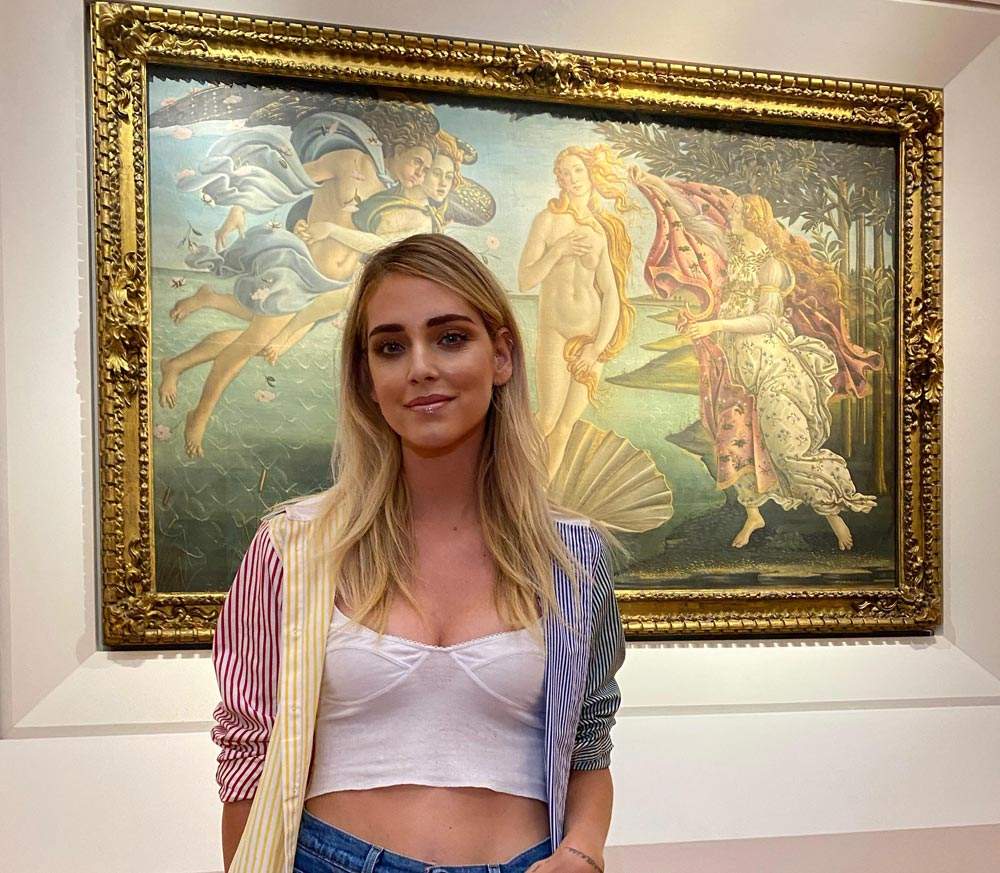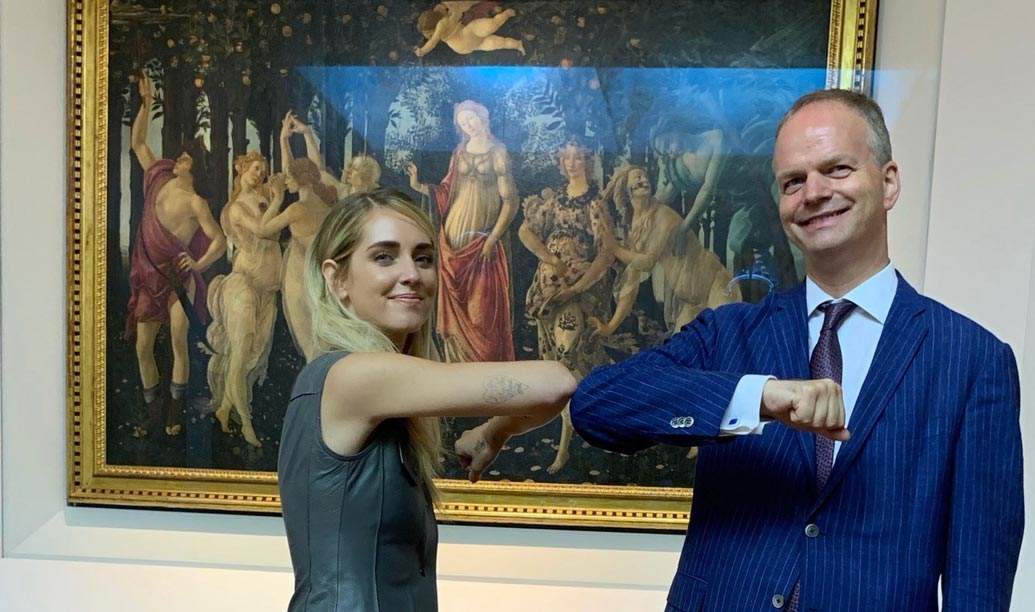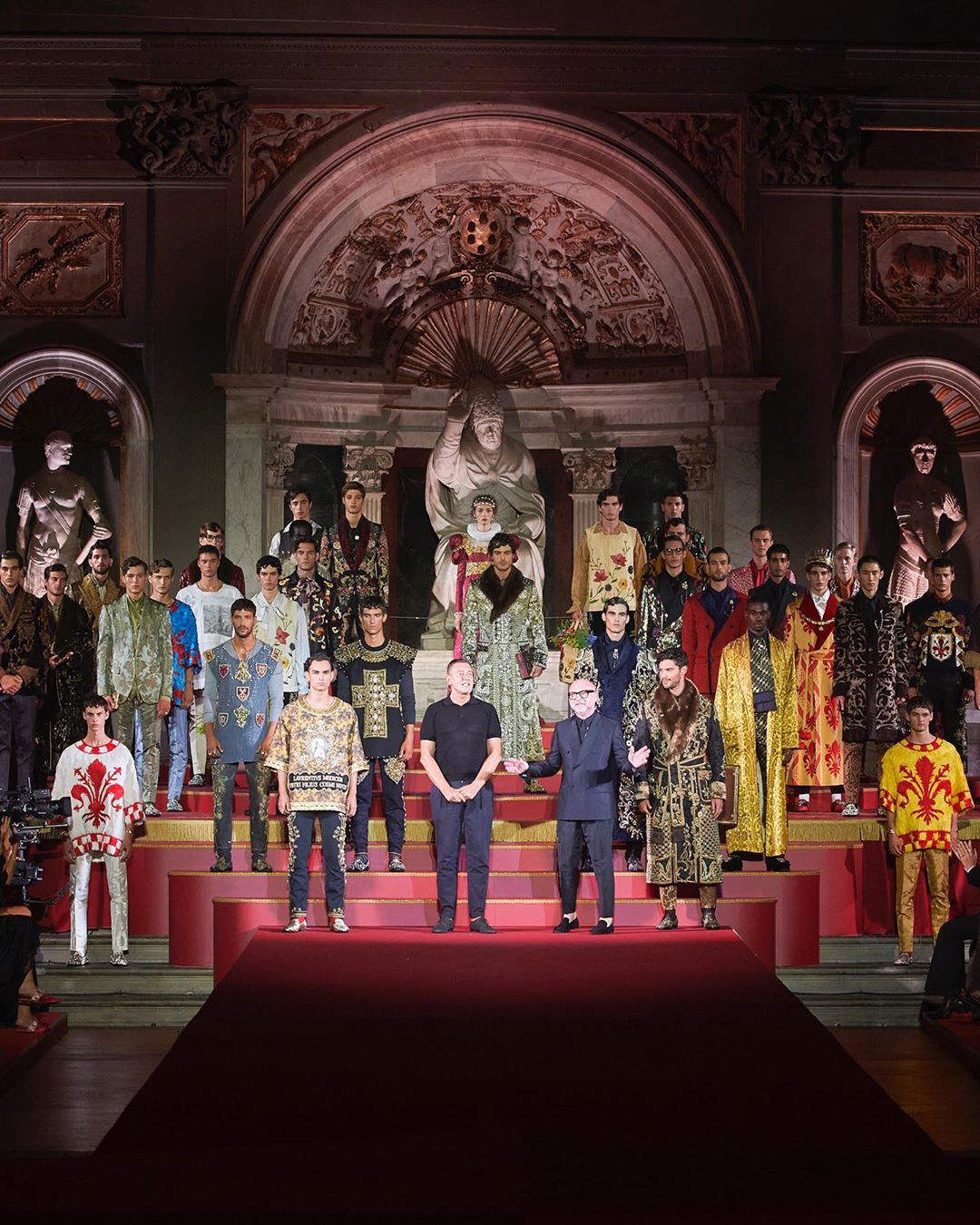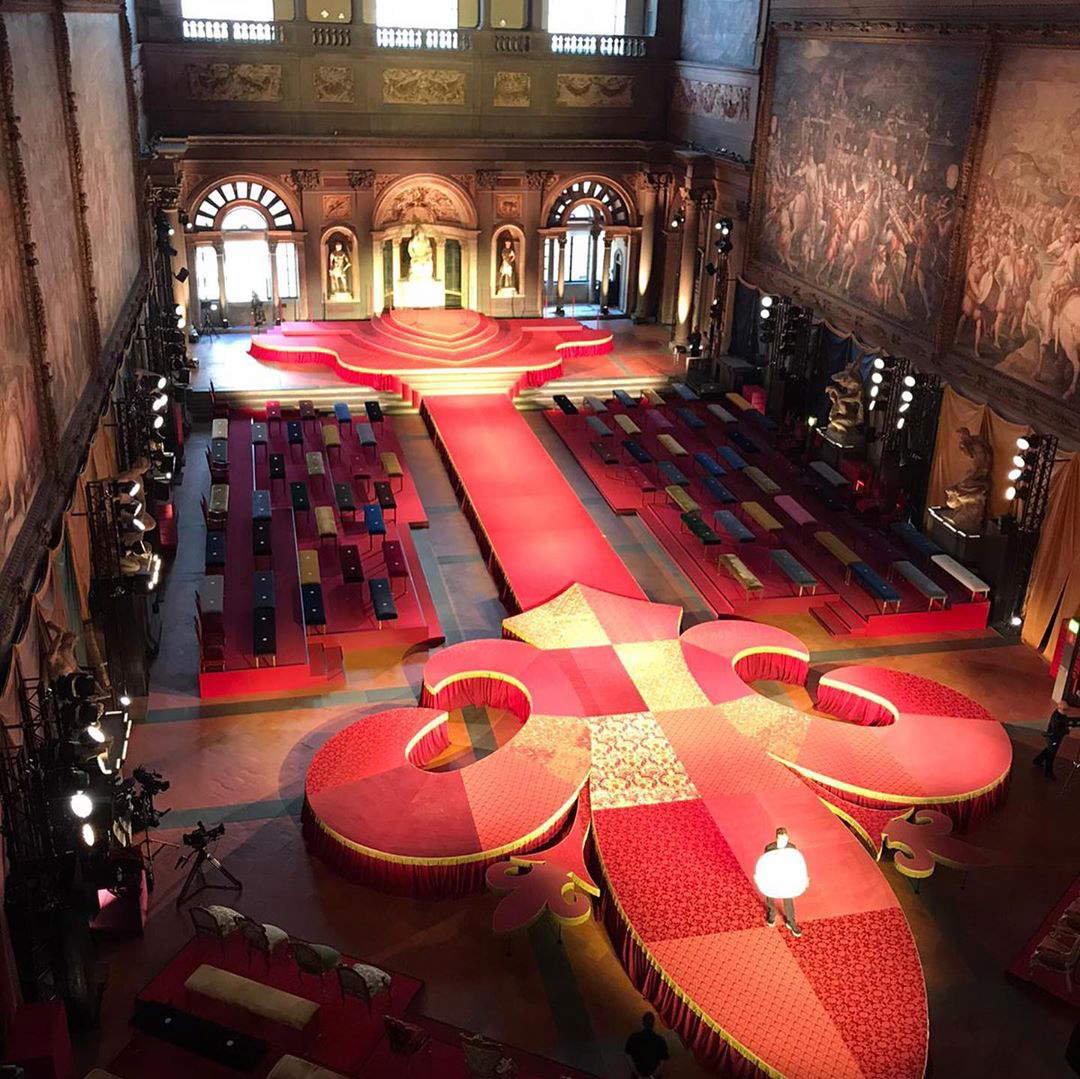Why did Ferragni at the Uffizi make you so much more outraged than D&G at the Palazzo Vecchio?
Meanwhile, the data: today, September 23, 2020, those who try to Google “Chiara Ferragni” and “Uffizi” will get more than a hundred thousand results. On the other hand, those who search for information on “Dolce and Gabbana” (or “Dolce & Gabbana”) and “Palazzo Vecchio” will be faced with just fifteen thousand results. A simple empirical figure showing that the visit of the well-known influencer from Cremona to the Uffizi attracted attention in a proportion ten times greater than the fashion show of the two Sicilian designers at Palazzo Vecchio.
Then, the facts: Chiara Ferragni, last July 17, went to the Gallery outside public opening hours (and thus with the museum closed) for a photo shoot, and her client, Vogue magazine, paid the Uffizi what it was owed for occupying the rooms. Instead, Dolce & Gabbana reserved Palazzo Vecchio for themselves, for thirteen days, forcing the museum to close to the public for eight days, in order to better organize the fashion show scheduled for September 2, with all the attendant annexes (cocktails, gala dinner in the Salone dei Cinquecento, private tours for D&G’s guests, and so on). And without the City Council having demanded the concession fee for the monumental spaces: all for free on the grounds that the event was “made its own by the City Council by virtue of the close inherent nature of the same with the institutional functions of the Municipality.” Not only that, D&G also received other benefits: a 50 percent discount on the fee for the occupation of public land, free access and parking permit in the ZTL, exemption from the amounts due for the services of the Municipal Police to ensure safety and fluidity of circulation, and even free of charge for the eventual participation of the Historical Procession of the Florentine Republic (participation later removed from the “eventuality” since the Historical Procession actually entertained the fashion house’s guests before the fashion show).
 |
| Chiara Ferragni at the Uffizi |
 |
| Chiara Ferragni at the Uffizi |
 |
| Dolce and Gabbana at Palazzo Vecchio |
 |
| Dolce and Gabbana at Palazzo Vecchio |
Finally, perception: Ferragni’s presence at the Uffizi unleashed, to use Ninja Marketing’s slang language, a "violent shitstorm under the Uffizi photo and posts were wasted on various social media attacking Ferragni, what commentators think she represents and how she devalues the artwork,“ all ”seasoned with the common threat of an immediate defollow to the museumaccount.“ The well-known marketing magazine summed up some of the reasons why Ferragni has been attacked: ”her activity is deprecated, her beauty is belittled work-wise, she is referred to as not representative of Italian beauty, and the whole operation (assuming we can really talk about an operation) referred to as counterproductive." The Uffizi was not spared (indeed: the insiders who wrote to stigmatize the operation lashed out more at the museum than at Chiara Ferragni), and were accused of debasing themselves, of distorting themselves, of trivializing the works in their collection. Of course, there are those who instead appreciated the museum’s actions, but the point I would like to emphasize is rather the vastness of the echo reached by the news, since so many people have written about Ferragni’s visit to the Uffizi and the event has even transcended national borders: it has been mentioned in Forbes, the Telegraph, El Mundo, the Frankfurter Allgemeine Zeitung, and several other world newspapers. And often to remark on how its presence has raised fierce controversy. Controversy that, it must be remembered, has not been confined to the narrow circle of industry circles, but has become transversal: “Chiara Ferragni at the Uffizi” was the topic that, for a few days, held court in cultural debates in newspapers and on social media.
In contrast, none of this happened for Dolce & Gabbana at Palazzo Vecchio. On the contrary, at first not even the insiders picked up on the warning launched by our magazine (the only one among the newspapers to criticize in advance the fashion maison ’s intentions) and by some local associationists: the very few outbursts of indignation all arrived ex post, after the fashion show was largely over, when Domenico Dolce and Stefano Gabbana had probably already left Florence. Yet the sum disparity between the two situations seems quite evident: on one side, a private company employing a testimonial with a closed museum, paying the institution for the trouble. On the opposite side, another private company that occupied for thirteen days a palace that is the seat of a public museum and of the Florentine city hall, forcing visitors to stay at the door (with the goodwill of those who had perhaps long since planned their trip to Florence), closing for a few hours even Piazza della Signoria, and all given away. Still, the first case sparked a huge wave of outrage that lasted for days on end, while the second remained a topic of discussion that fizzled out in a matter of hours and affected just the communication channels of the cultural heritage sector. Even, so many environmental exponents who wrote about Chiara Ferragni, perhaps thought it was not appropriate to devote two lines also to the far more enduring and annoying occupation of Dolce and Gabbana.
And let’s also dispel any objections that Dolce and Gabbana “gave work” and “promoted the city,” since they could have easily done so without occupying Palazzo Vecchio (without calculating that, moreover, Ferragni also “gave work” and “promoted the city”). Or, if it was really necessary for the parade to be held in the Salone dei Cinquecento because it is deemed that Palazzo Vecchio and Florence need promotion (which is entirely legitimate), the Municipality could at least have made them pay the concession fee, the same fee it made Ferrari pay the following week(which similarly shut down Palazzo Vecchio, again to general disinterest). If the cases of Chiara Ferragni and D&G were to be compared, I do not see how anything should be recriminated against the former that cannot be imputed to the latter.
The affair thus suggests some points for discussion. Why did so many not condone a Chiara Ferragni photo shoot in tight Uffizi, while instead turning an abundant blind eye to D&G’s descent on Palazzo Vecchio? Why, despite the fact that the two stylists’ intentions had been made known before the City Council deliberated on the (free) concession of Palazzo Vecchio’s monumental spaces, did no one in our sector feel it necessary to write about the case in time? Could it be that it escaped everyone ’s notice, and that even commentators ready to tear their clothes off if there is a badly screwed-up light bulb in a public museum did not consider it worthy of attention? Could it be that it needed to be mentioned only when the workers had already finished dismantling the parade sets? Why did the outrage that swept over Chiara Ferragni only barely touch Dolce & Gabbana?
Warning: the translation into English of the original Italian article was created using automatic tools. We undertake to review all articles, but we do not guarantee the total absence of inaccuracies in the translation due to the program. You can find the original by clicking on the ITA button. If you find any mistake,please contact us.




























